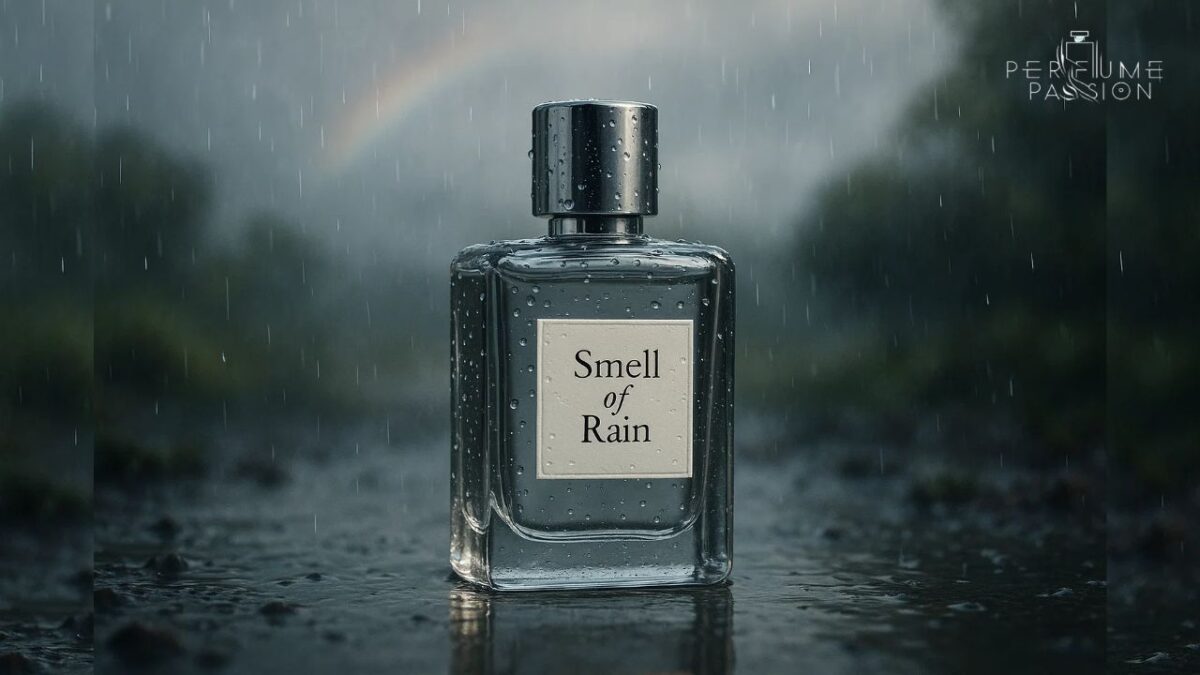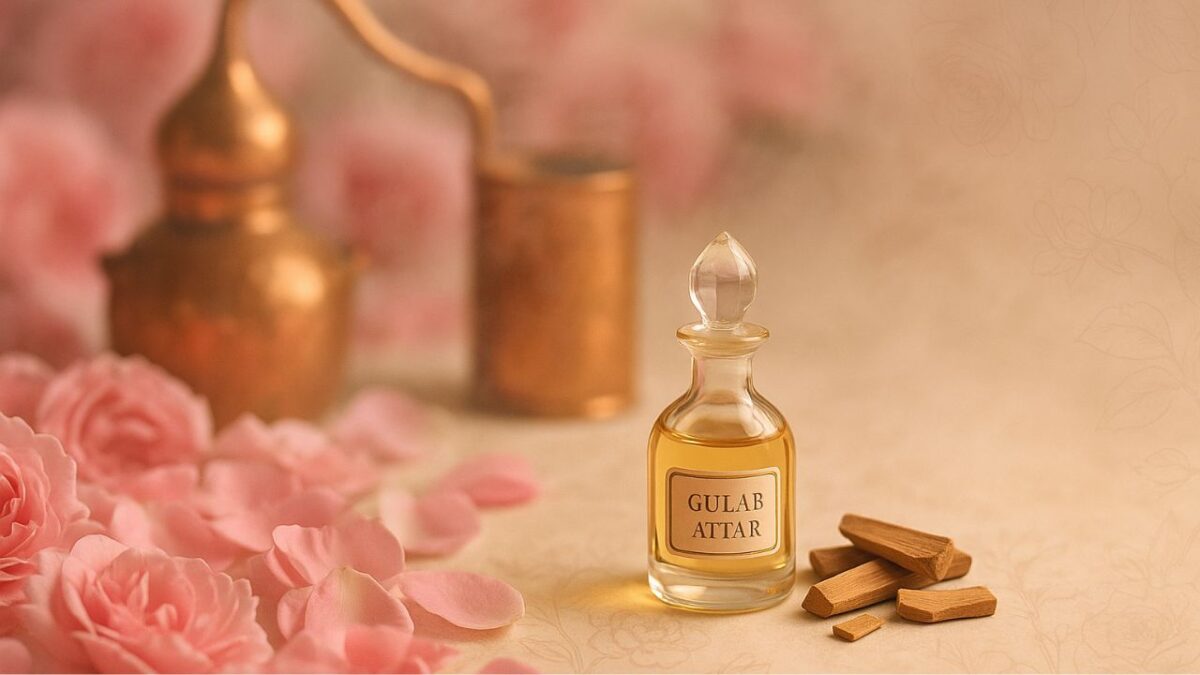Have you ever stepped outside after a long dry spell and felt overwhelmed by the earthy, nostalgic, and almost magical scent that the first rain brings? That’s not just your imagination—it’s a complex fragrance known scientifically as petrichor, and to perfume experts like me, it’s one of the most enchanting notes to recreate. In this article, I’ll take you deep into what makes the smell of first rain perfume so special, how it’s crafted, and why it’s more than just a scent—it’s a memory bottled with emotion.
If you’ve been searching for that elusive perfume smell of rain, or want to understand the science and soul behind rain-inspired fragrances, you’re in the right place.
Table of Contents
What is the Smell of First Rain? A Fragrance from Nature
The term “petrichor” was coined in 1964 by two Australian scientists who discovered that the distinct earthy smell after rain comes from oils secreted by plants and a compound called geosmin, released by soil-dwelling bacteria when raindrops hit the ground.
This smell is:
- Earthy and mineral-rich
- Damp yet clean
- Slightly sweet and vegetal
As a perfume enthusiast, I’ve always been fascinated by the idea of replicating this smell of first rain perfume in a way that feels true to life—not synthetic, not overpowering, but authentic and emotional.
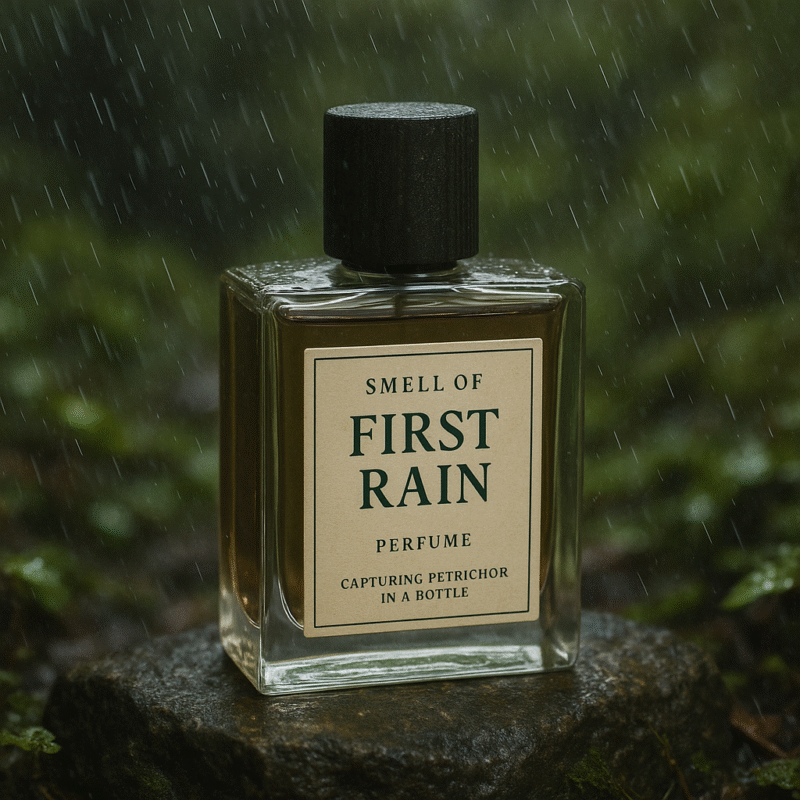
The Science of Recreating the Rain in Perfume
While we can’t bottle rainwater, we can replicate the scent profile using a combination of natural extracts and aroma molecules.
Here’s how most first rain perfumes are composed:
- Geosmin: A naturally occurring compound that gives soil its earthy scent. It’s very potent and must be used sparingly.
- Iso E Super: A synthetic molecule that creates a woody, soft, and slightly wet aroma—perfect for mimicking rain on dry bark or cement.
- Vetiver: Extracted from grass roots, it provides a deep, green-earthy note with excellent longevity.
- Patchouli: Adds moisture and richness to the composition.
- Orris Root and Violet Leaf: Give a soft powderiness, often associated with the hazy air after a rainfall.
In modern perfumery, especially with the rise of niche and artisanal brands, these ingredients are blended with incredible precision to evoke not just the smell, but the emotion of rain.
Why the Smell of First Rain Perfume is So Popular
1. Emotional Nostalgia
Rain reminds people of school days, monsoon holidays, chai on the balcony, or quiet walks under umbrellas. The scent is a powerful emotional trigger.
2. Gender-Neutral Appeal
The perfume smell of rain is inherently neutral—neither floral nor musky—making it ideal for unisex fragrances.
3. Calming Effect
Geosmin and earthy notes have a grounding effect on the mind, often linked to relaxation and meditation.
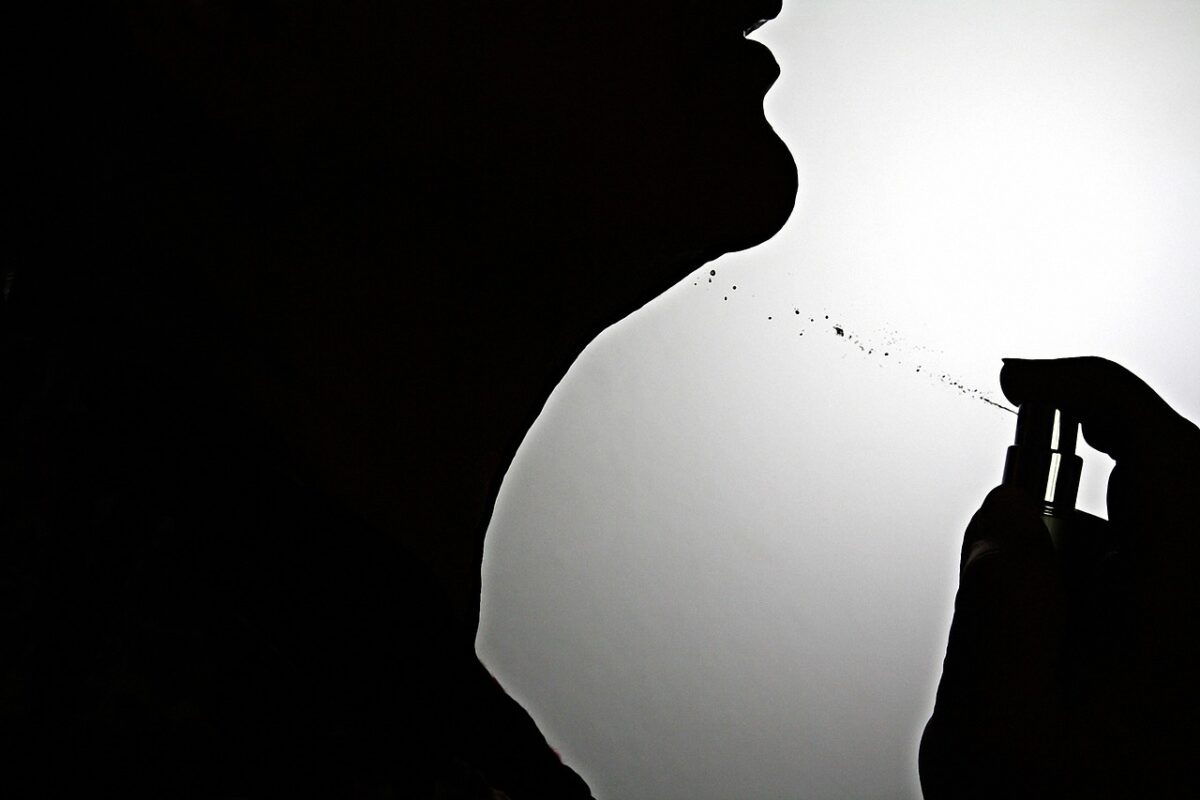
Popular Perfumes that Smell Like Rain
As someone who collects and tests rain-inspired fragrances, here are a few global and Indian perfumes that truly capture that first rain feeling:
Demeter Petrichor (USA)
A linear scent that mimics the wet soil scent to perfection. Very raw and realistic.
Commodity Rain (USA)
Light, airy, and green. This one captures the scent of fresh rainfall over wet leaves.
Nea by Nishane (Niche Brand)
Complex yet cozy, blending orris, vanilla, and a hint of damp earth. Ideal for evening wear.
ISAK Fragrances – Monsoon Memories (India)
Handmade in Lucknow, this perfume beautifully balances rain-soaked mitti (earth) with subtle floral hints.
Mittī Attar – Traditional Indian Distillate
Distilled from clay and sandalwood oil in Kannauj, this is the most authentic first rain perfume you can find in India. It literally smells like a dusty road kissed by rain.
Creating Your Own First Rain-Inspired Perfume: Expert Insights
If you’re a budding perfumer or even a DIY enthusiast, you can try making a smell of first rain perfume at home with the following steps:
Ingredients:
- Geosmin isolate or vetiver essential oil
- Patchouli essential oil
- Violet leaf absolute
- Iso E Super (optional)
- Perfumers alcohol (95% ethanol)
- Fixative like glycerin or DPG
Basic Formula:
- Top Note: Violet Leaf (10%)
- Middle Note: Vetiver (30%) + Patchouli (15%)
- Base Note: Geosmin or Iso E Super (10%)
- Alcohol: 35%
- Fixative: 5%
Let it macerate for 2–3 weeks in a cool, dark place. The result? A natural, earthy perfume that mimics a walk through wet fields or a garden after rain.
Perfume Psychology: Why Rain Smells Make Us Feel Good
Here’s what I’ve observed from customer responses over the years:
- Rain perfumes evoke clarity. People describe them as “clean,” “fresh,” or “comforting.”
- They reduce anxiety. Earthy scents like geosmin have a grounding effect.
- They feel real. In a world of sugar bombs and synthetic florals, rain perfumes feel natural and authentic.
Psychologically, these fragrances connect with our primal instincts—rain means life, nourishment, and renewal.
Who Should Wear a Rain-Inspired Perfume?
These perfumes are perfect for:
- Nature lovers
- Creative souls and artists
- People who dislike overly sweet or spicy scents
- Yoga practitioners and minimalists
They’re often considered daytime scents, especially during summer or monsoon months.
Tip from a Perfumer: Layer a first rain perfume with a soft sandalwood scent to deepen its richness for evening wear.
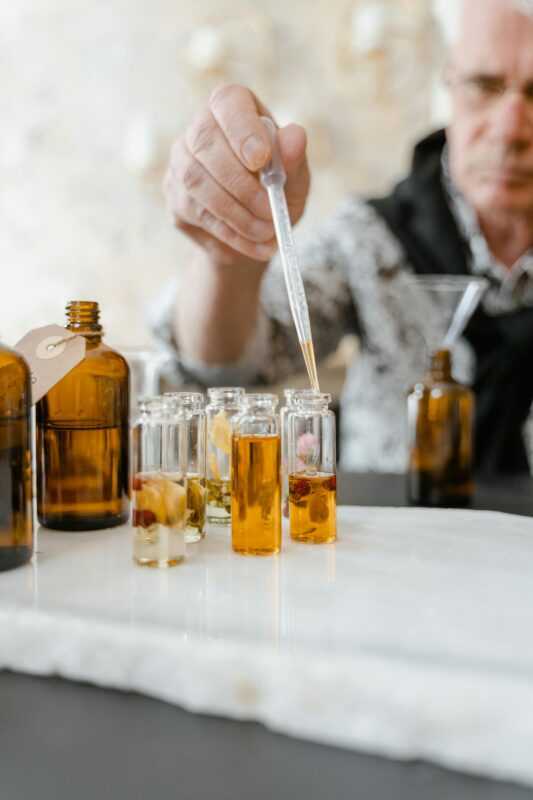
Growing Market for First Rain Fragrances in India
As more Indian consumers seek natural, rooted, and emotionally resonant fragrances, demand for smell of first rain perfume is growing.
Trends I’ve noticed:
- Niche brands are launching monsoon-themed scents.
- Ayurveda-inspired perfumes use mitti attar as a hero ingredient.
- Gen Z and Millennials are gravitating toward non-gendered, story-based perfumes.
Platforms like Nykaa, Sublime Life, and ISAK Fragrances are leading this evolution, offering customers more than just fragrance—a memory, a feeling, a personal identity.
Final Thoughts: More Than a Scent, It’s a Sensation
The smell of first rain perfume is not just about replicating a fragrance. It’s about bottling a moment, a memory, and an emotion that’s universally understood. Whether you’re a perfume lover, a brand owner, or someone who simply loves the calming energy after a downpour, this scent offers a deeply personal olfactory experience.
From my journey as a perfumer, I can say this: while roses and musks come and go with trends, the scent of rain is timeless. It connects us with the earth, our past, and something quietly beautiful in nature.
Frequently Asked Questions
1. What is the smell of first rain perfume made from?
Typically a blend of geosmin, vetiver, patchouli, violet leaf, and synthetic molecules like Iso E Super to recreate the earthy, damp scent of rain hitting dry soil.
2. Where can I buy perfume that smells like rain in India?
You can explore Mittī Attar from Kannauj, ISAK Fragrances’ Monsoon Memories, or Forest Essentials’ Oudh & Vetiver mists for a rain-inspired experience.
3. Is the perfume smell of rain unisex?
Yes. These fragrances are universally appealing and often gender-neutral due to their earthy, green, and woody composition.
4. How long does the smell of first rain perfume last?
It depends on the concentration and fixatives used. Mittī attars last 4–6 hours, while EDPs (eau de parfum) with stronger bases like vetiver can last 8+ hours.
5. Can I make rain-inspired perfumes at home?
Yes, with essential oils like vetiver, patchouli, and violet leaf combined with alcohol, you can craft your own earthy blend. However, geosmin is hard to source and must be diluted carefully.
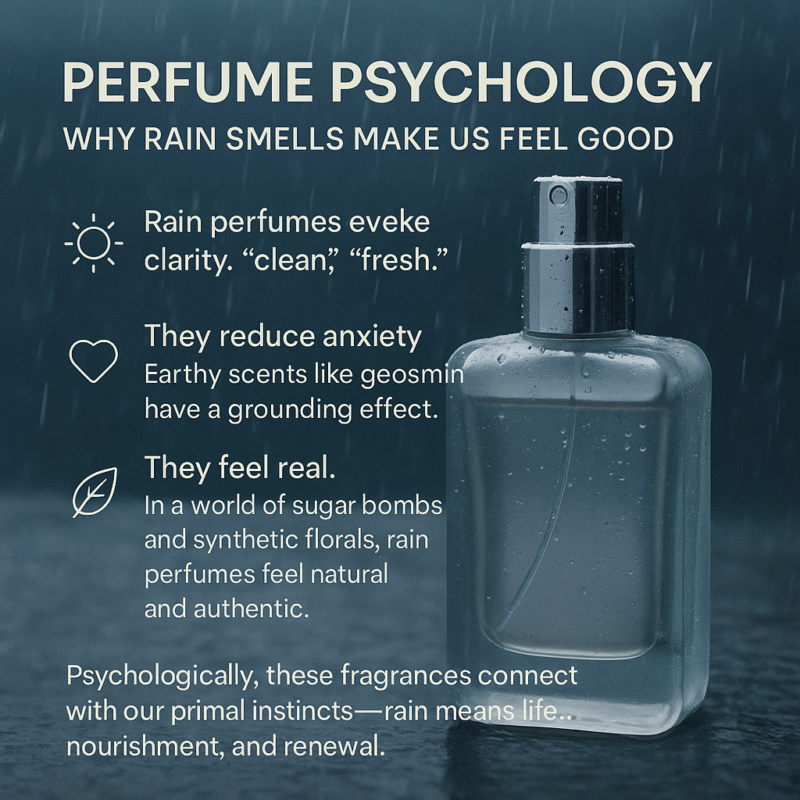
Citations and Sources
- Scientific American – What Causes the Smell After Rain (Petrichor)
https://www.scientificamerican.com/article/what-causes-the-smell-after-rain/ - Demeter Fragrance Library – Petrichor Perfume
https://www.demeterfragrance.com/ - FFDC (Fragrance and Flavour Development Centre – India)
https://www.ffdcindia.org
– For information on Mittī Attar and traditional rain-scented distillation methods. - ISAK Fragrances – Monsoon Memories Perfume
https://www.isakfragrances.com - Nishane Nea Perfume Overview (Fragrantica)
https://www.fragrantica.com/perfume/Nishane/Nea-62588.html - Olfactory Reference: Perfumer’s Apprentice – Geosmin and Earthy Notes
https://shop.perfumersapprentice.com

Siddhartha Das is a dedicated perfume enthusiast and the content editor at perfumepassion.in. With a deep curiosity for the art and science behind fragrances, he is on a journey to explore and understand the ever-evolving world of perfumery. His passion drives him to research ingredients, uncover scent trends, and decode the stories behind popular and niche perfumes alike.
As the content editor of the site, Siddhartha ensures that every article is grammatically sound, engaging, and informative. He combines editorial precision with fragrance knowledge to deliver content that meets both reader expectations and Google’s quality standards. Whether you’re a beginner looking for fragrance tips or a seasoned collector exploring rare scents, Siddhartha’s insights and editorial excellence help make perfumepassion.in a trusted destination for all things perfume.

